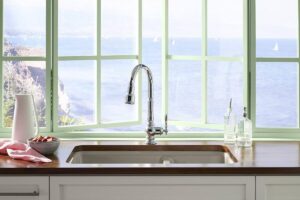A Guide to the Perfect Paint Finish for Your Home
When it comes to painting your home, selecting the right paint finish can be as important as choosing the perfect color. Among the wide range of finishes available, satin and eggshell are two popular options offered by Sherwin-Williams. In this comprehensive guide, we’ll dive into the differences between satin and eggshell finishes, helping you make an informed decision for your next painting project.
Understanding Paint Finishes
Before we delve into the specifics of satin and eggshell finishes, let’s take a moment to understand what paint finishes are and why they matter.
H1: What Are Paint Finishes?
Paint finishes, also known as sheens or lusters, determine the level of gloss or shine a paint will have once it dries. Different finishes offer varying levels of durability, ease of cleaning, and aesthetic appeal.
H2: Why Choose the Right Finish?
Selecting the appropriate paint finish is crucial because it affects both the appearance and functionality of your painted surfaces. The finish can impact how well the paint hides imperfections, how easy it is to clean, and the overall ambiance of the room.
Satin Finish: The Versatile Choice
Satin finishes are known for their versatility and are a popular choice for many interior paint projects.

H3: Characteristics of Satin Finish
- Smooth Finish: Satin paints offer a subtle, velvety sheen that provides a soft, elegant look to your walls.
- Easy to Clean: These finishes are more washable than flat paints, making them suitable for high-traffic areas.
- Hides Imperfections: Satin paint can conceal minor flaws in your walls, providing a polished appearance.
H3: Ideal Uses for Satin Finish
- Living Rooms: Satin finishes work well in living rooms, where you want a touch of sophistication and easy maintenance.
- Bedrooms: They create a cozy and inviting atmosphere in bedrooms.
- Hallways and Entryways: Due to their durability, satin finishes are perfect for high-traffic areas.
Eggshell Finish: A Subtle Elegance
Eggshell finishes offer a unique blend of sophistication and understated beauty.
H3: Characteristics of Eggshell Finish
- Low Sheen: Eggshell paints provide a subtle, low-level sheen that adds a touch of elegance without being too glossy.
- Washable: They are moderately washable, making them suitable for areas with moderate traffic.
- Conceals Imperfections: Similar to satin, eggshell finishes can hide minor flaws on your walls.
H3: Ideal Uses for Eggshell Finish
- Dining Rooms: Eggshell finishes create an intimate dining experience.
- Bedrooms: They provide a delicate ambiance, perfect for relaxation.
- Home Offices: Eggshell is an excellent choice for a professional yet inviting workspace.
The Choice: Satin vs. Eggshell
Now that we’ve explored the characteristics and ideal uses of both finishes, let’s compare them head-to-head.
H2: Satin vs. Eggshell: The Comparison
- Sheen Level: Satin has a slightly higher sheen than eggshell, offering a touch more shine.
- Durability: Satin is more durable and washable compared to eggshell, making it ideal for high-traffic areas.
- Aesthetics: Eggshell provides a subtle, elegant look, while satin adds a bit more sophistication.
- Price: Satin finishes are usually priced slightly higher than eggshell.
Making the Decision
The choice between satin and eggshell ultimately depends on your specific needs and preferences.
H2: How to Decide
Consider the following factors when making your decision:
- Room Function: Think about the room’s purpose and how much traffic it will see.
- Aesthetic Preferences: Determine the level of sheen and elegance you desire.
- Budget: Keep your budget in mind, as satin finishes are typically a bit more expensive.
Conclusion
In the world of paint finishes, satin and eggshell are both excellent choices, each with its unique characteristics and advantages. Whether you opt for the sleek sophistication of satin or the subtle elegance of eggshell, Sherwin-Williams offers top-quality paints to transform your home.
FAQs
H2: Frequently Asked Questions
Can I use satin and eggshell finishes in the same room?
Yes, you can use both finishes in the same room to create a visually interesting contrast. For example, you can use satin on the trim and eggshell on the walls.
Do I need a primer with satin and eggshell finishes?
It’s advisable to use a primer, especially if you’re painting over a darker color or a porous surface, to ensure proper adhesion and color consistency.
Can I paint over an existing satin or eggshell finish with a different sheen?
While it’s possible, it’s recommended to sand the existing finish lightly and apply a primer to ensure a smooth transition.
How many coats of satin or eggshell paint do I need?
Typically, two coats are sufficient for complete coverage and the desired finish.
Is there a significant difference in paint odor between satin and eggshell finishes?
Both finishes have low levels of VOCs (volatile organic compounds) and emit minimal odor, making them suitable for indoor use.




